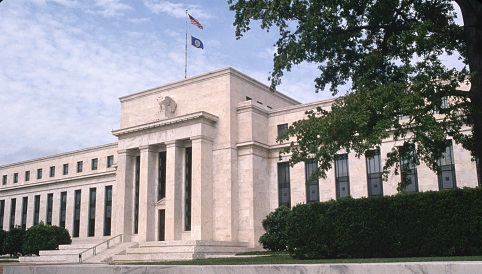Wall Street enjoyed a strong finish to the week last Friday, with the S&P 500 gaining another 0.8% to close around 4475, with sentiment at the time lifted by a stronger than expected US Retail Sales report for September and ongoing tailwinds from the strong start to the Q3 US corporate earnings season (last week’s bank earnings have instilled some optimism about ongoing US economic strength). That optimism failed to carry through into Asia Pacific trade at the start of this week, with weaker than expected Chinese Q3 GDP figures (the YoY rate of GDP came in at 4.9% versus expectations for 5.2%) and September Industrial Production figures (which fell to 3.1% YoY versus expected 4.5%) weighing on sentiment. E-mini S&P 500 futures are down about 0.2% and the Stoxx 600 is down about 0.5% this morning. Familiar concerns regarding inflation also continue to act as a headwind, as commodity prices continue to surge (WTI at multi-year highs and pushing towards $84 per barrel and fresh record highs for the BBG Industrial Metal Subindex above 185) and following a much hotter than expected New Zealand Q3 CPI report (inflation shot up to 4.9% YoY on the quarter versus expectations for 4.1%).
Signs of higher, more persistent inflation continue to drive global bond yields higher (the US 10-year has crossed above 1.60% again this morning) and inflation expectations up (US 10-year breakevens are testing multi-year highs in the mid-2.50s%). Central bank expectations tightening expectations are also getting more hawkish; there has been a lot of attention on short-end yields in the US and UK in recent weeks; US 2-year yields currently trade around 0.43%, up nearly 20bps over the last three weeks to reflect increasingly hawkish bets being made in US money markets on Fed hikes in H2 2022 – the money market implied probability of at least one 25bps rate hike by September 2022 is now around 70%. However, the recent move higher in the US 2-year yield puts its US counterpart to shame; having spiked over 15bps at one point today, 2-year UK yields are above the 0.70% level, meaning they are up more than 30bps in the last three weeks and more than 60bps since the end of August. After what has been framed as hawkish comments BoE Governor Bailey over the weekend, who essentially said the bank would act to prevent inflation expectations from becoming de-anchored, UK money markets are now pricing in a 15bps rate hike as soon as November (to take rates to 0.25%).
This move higher in global yields, particularly at the short-end as central bank expectations become more hawkish, does not appear to be weighing on sentiment in global stock markets just yet. Investors seem to be viewing the prospect of a more front-loaded global rate hiking cycle as being optimal as it would keep inflation risks under wraps without rates actually needing to go up too much in the end, which is better for long-term equity valuations and is also deemed as being better for the economy. It will be important to monitor major US earnings releases this week to assess whether corporate America continued to thrive in Q3 (last week’s bank earnings suggests that the answer to this is a resounding yes, but investors will want confirmation). As long as commodity price surges, inflation and central banking fears don’t get too out of hand this week, a good earnings backdrop could see US (and global) equity bourses continue to perform well after last week’s strong rally. The technical picture is certainly bullish, with the S&P 500 and Stoxx 600 both last week’s breaking above a key downtrend that had put a lid on the price action since early September, which implies a return to/retest of recent record highs could be on the cards so long as sentiment holds up.
With regards to FX markets, the US dollar is modestly firmer and back above the 94.00 level, modestly boosted by losses in major global equity bourses following the weak China data and amid inflation concerns. The worst performing of the G10 majors are AUD and CAD, the latter despite positive reopening/vaccination rate news out of Australia and the former despite further gains in crude oil prices. Perhaps both are tentative ahead of key domestic economic events later in the week including RBA minutes tomorrow, Canadian CPI on Wednesday and Canadian Retail Sales on Friday. NZD was unable to benefit from the aforementioned much hotter than expected Q3 CPI report and is now down about 0.2% on the day, having failed to break above its 200DMA at 0.7100 overnight. CHF and JPY are both down by about 0.1% on the day versus the buck, as is GBP, despite the previously mentioned hawkish tone of BoE Governor Bailey over the weekend and the associated spike in short end yields as rate hike expectations become even more hawkish. GBPUSD is currently trading just under 1.3750, while EURUSD is subdued and flat on the day close to 1.1600.
In terms of the day ahead, US September Industrial Production and October NAHB Housing Market Index data are released at 1415BST and 1500BST respectively, while the Canadian Business Outlook Survey will be released at 1530BST ahead of comments from BoC Governing Council Member Lane at 1640BST. The US data is unlikely to impact macro sentiment much, but the Loonie may be twitchy on BoC related events.




